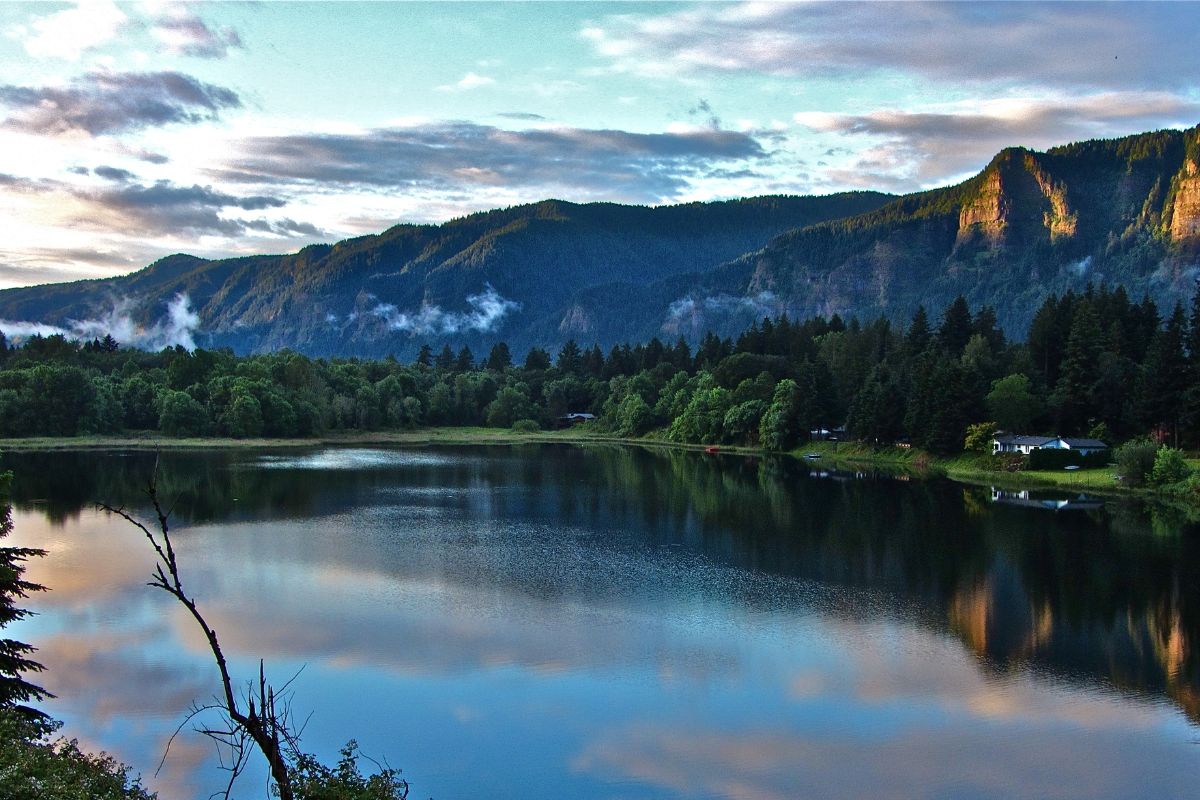Secrets Of Washington’s Columbia River Fish Weirs

Ever wondered how ancient fishing techniques still impact modern practices? Washington's Columbia River fish weirs hold the answer. These ingenious structures, used by Native American tribes for centuries, are more than just historical artifacts. They reveal a deep understanding of the river's ecosystem and fish behavior. By guiding fish into traps, these weirs allowed for sustainable harvesting, ensuring fish populations remained healthy. Today, they offer valuable lessons in conservation and resource management. Whether you're a history buff, a fishing enthusiast, or someone interested in sustainable practices, the story of these fish weirs is both fascinating and educational. Dive in to learn how ancient wisdom continues to shape our world.
Discovering the Columbia River Fish Weirs
The Columbia River, a majestic waterway in the Pacific Northwest, is home to ancient fish weirs. These structures, used by indigenous tribes for centuries, offer a glimpse into the region's rich history and culture. Let's explore some of the most fascinating fish weirs along the Columbia River.
1. Celilo Falls
Celilo Falls, once a bustling fishing site, was submerged by the construction of The Dalles Dam in 1957. However, its legacy lives on. The falls were a vital fishing and trading hub for Native American tribes. Here, fish weirs were ingeniously crafted to catch salmon during their annual migration.
2. Cascade Locks
Cascade Locks, located in the heart of the Columbia River Gorge, is another significant site. The fish weirs here were used by the Cascade tribe to harvest salmon. Today, visitors can learn about the traditional fishing methods and the importance of salmon in the local culture.
3. Kettle Falls
Kettle Falls, situated in northeastern Washington, was a major fishing site for the Colville Confederated Tribes. The fish weirs at Kettle Falls were designed to capture large quantities of salmon, which were then dried and stored for winter. This site remains a symbol of the tribes' ingenuity and resourcefulness.
4. Priest Rapids
Priest Rapids, located in central Washington, was another key fishing location. The Wanapum tribe used fish weirs here to catch salmon and other fish species. The rapids provided an ideal environment for constructing weirs, making it a crucial site for the tribe's sustenance.
5. Rock Island Rapids
Rock Island Rapids, near Wenatchee, Washington, was a significant fishing area for the Yakama Nation. The fish weirs at this site were strategically placed to maximize the catch during the salmon runs. Today, the area is known for its rich history and the enduring legacy of the Yakama people.
6. Bonneville Dam
Bonneville Dam, while a modern structure, has historical significance. Before the dam's construction, the area was known for its prolific fish weirs used by various tribes. The dam now features a fish ladder, allowing salmon to bypass the structure and continue their migration, preserving the river's ecological balance.
7. Chief Joseph Dam
Chief Joseph Dam, located on the Columbia River in north-central Washington, is another site with historical fish weirs. The dam's construction impacted traditional fishing practices, but efforts have been made to mitigate these effects. The area remains a testament to the resilience of the indigenous tribes.
8. The Dalles
The Dalles, a city along the Columbia River, was once home to extensive fish weirs used by the Wasco and Wishram tribes. These weirs were essential for catching salmon, which played a central role in the tribes' diet and culture. The Dalles continues to celebrate its rich fishing heritage.
9. Hanford Reach
Hanford Reach, the last free-flowing section of the Columbia River in the United States, is a vital habitat for salmon. The fish weirs here were used by various tribes to harvest fish sustainably. Today, Hanford Reach is a protected area, preserving the natural beauty and historical significance of the region.
10. Wells Dam
Wells Dam, located in north-central Washington, is another site with a history of fish weirs. The dam's construction altered the river's flow, but fish ladders have been installed to aid salmon migration. The area remains a crucial part of the Columbia River's fishing legacy.
11. McNary Dam
McNary Dam, situated near the Oregon-Washington border, has a rich history of fish weirs. Before the dam's construction, the area was a prime fishing spot for indigenous tribes. Today, fish ladders and other measures help maintain the river's ecological balance, honoring the traditional fishing practices of the past.
12. Grand Coulee Dam
Grand Coulee Dam, one of the largest concrete structures in the world, has a complex history with fish weirs. The dam's construction significantly impacted traditional fishing sites, but ongoing efforts aim to restore fish populations and honor the cultural heritage of the indigenous tribes.
Discovering the Columbia River Fish Weirs
The Columbia River fish weirs offer a unique glimpse into the past. These ancient structures, used by Native American tribes, showcase a sustainable way of fishing that has stood the test of time. Visiting these weirs not only provides a historical perspective but also highlights the importance of preserving traditional methods.
Exploring the Columbia River and its fish weirs can be a rewarding experience. You get to see how these ingenious traps work and understand their role in the ecosystem. It's a chance to connect with nature and history simultaneously.
Next time you're in Washington, make sure to visit the Columbia River fish weirs. They are a testament to human ingenuity and a reminder of the need to protect our natural resources. This trip will leave you with a deeper appreciation for both history and the environment.

